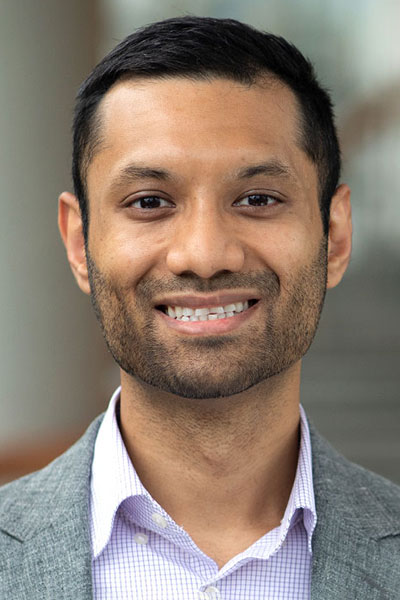As the COVID-19 pandemic continues, researchers have increasingly turned their attention to lingering symptoms after infection, known as post-COVID syndrome or long COVID.
Approximately 40% of US adults have reported COVID-19 infection, and of those, 19% say they still experience symptoms months later, according to Christopher Dipollina, DO, third-year internal medicine resident at the University of Connecticut. Dr. Dipollina was one of several speakers to present investigations into the phenomenon during the CHEST 2022 session, Long COVID: It Can Take Your Breath Away, on Sunday, October 16.

PFT and disease severity
One area of long COVID that is not fully understood is the change in respiratory function after infection, Dr. Dipollina said. He presented a retrospective analysis of 471 patients who had been diagnosed with COVID-19 by polymerase chain reaction tests, had pulmonary function tests (PFTs) within 2 to 12 months after diagnosis, and had follow-up at outpatient pulmonary clinics. Patients were grouped by severity, based on the oxygen devices needed.
Investigators found that the presence of obstruction on PFTs after COVID-19 was not related to the severity of disease. However, there was a correlation between severity and presence of restriction on PFT in patients on high-flow cannula, noninvasive ventilation, and mechanical ventilation. Likewise, there was correlation between the presence of DLCO impairment on PFT and disease severity for patients who progressed beyond room air for their oxygen needs.

Thoracic ultrasound and dyspnea
Dyspnea is one of the most common physical symptoms seen in survivors of severe COVID-19 pneumonia, especially with ARDS, said Marjan Islam, MD, assistant professor of medicine at Albert Einstein College of Medicine and Montefiore Medical Center. Dr. Islam presented the results of a prospective, single-center study into the use of thoracic ultrasound to evaluate those patients.
The analysis showed that higher lung ultrasound scores correlated positively and significantly with patient-reported dyspnea, both at rest and during exertion. A high lung ultrasound score also correlated with more exertional oxygen desaturation during a 6-minute walk test and a shorter walking distance.
Diaphragm ultrasound score did not correlate with dyspnea, but higher excursion did correlate positively and significantly with the 6-minute walk test distance.
“Lung ultrasound score reflected the magnitude of lung injury following viral pneumonia in this post-COVID population,” Dr. Islam said. “And lung ultrasound scores may predict which patients would desaturate with exertion and which may benefit from physical therapy and pulmonary rehab, as well as prolonged oxygen therapy.”

Post-COVID ILD
Several studies have suggested that COVID-19 survivors are at risk for post-infection interstitial lung disease (ILD), possibly increasing long-term morbidity, but risk factors have varied from study to study, said Sungryong Noh, MD, a sixth-year pulmonary and critical care fellow at UTHealth Houston McGovern Medical School. In addition, it’s unclear if these risk factors apply to immunocompromised patients, such as people with cancer.
Dr. Noh presented the results of a prospective study of ILD after COVID-19 in patients with and without cancer that aimed to answer these questions. The study evaluated a cohort of 94 patients with cancer who were hospitalized for SARS-CoV-2 pneumonia and referred on discharge to a post-COVID clinic. The non-cancer cohort of 45 patients self-referred to a post-COVID clinic.
The results showed that post-COVID ILD was common at 3 months in both patient groups, with and without cancer, but most resolved by 6 months, Dr. Noh said. About one-quarter of patients had persistent pulmonary impairment.
The researchers found higher peak Radiologic Severity Index score on chest radiograph during the hospital course and older age (60 and up) were both significantly associated with risk of developing persistent post-COVID ILD at 3 and 6 months. A subgroup analysis of the patients with cancer identified the same risk factors.
“Further studies are needed to investigate the incidence of post-COVID ILD with new variants and to develop evidence-based approaches to diagnose and treat post-COVID ILD,” Dr. Noh concluded.
In addition, Stephen Michael Goertzen, DO, a second-year pulmonary and critical care fellow at Brooke Army Medical Center, presented a study on COVID-19 Chronic Impairment with Pulmonary Symptoms (ChIPS). Juwon Park, PhD, assistant professor in the department of tropical medicine, medical microbiology, and pharmacology at the University of Hawaiʻi at Mānoa, presented on elevated circulating monocytes and monocyte activation in pulmonary post-acute sequelae of SARS-CoV-2 infection. And Amy Ludwig, MD, a second-year pulmonary and critical care fellow at Northwestern McGaw Medical Center, discussed the trajectory of recovery in PFTs for patients with respiratory post-acute sequelae of COVID-19 infection.
Join us at CHEST 2024
Connect in person with influential clinicians from around the world—and attend top-tier educational sessions focusing on the most relevant clinical topics. CHEST 2024 will have it all, including optional add-on sessions to customize your learning. Reserve your spot today, and save $100 when you register by September 22.





